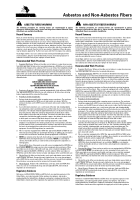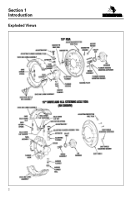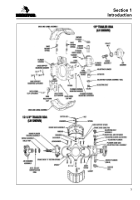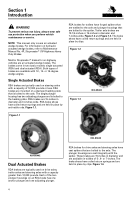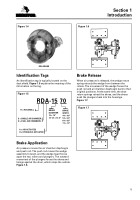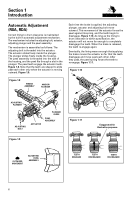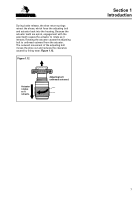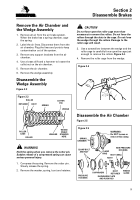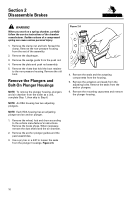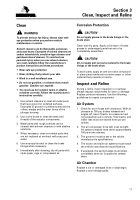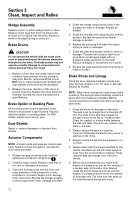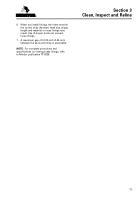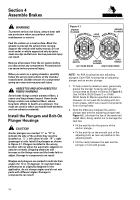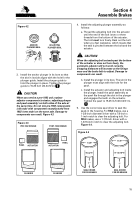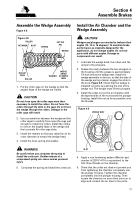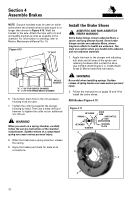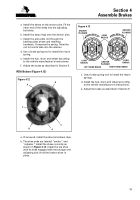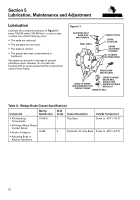MERITOR-TP-9853 - Page 15 of 32
Section 3
Clean, Inspect and Reline
11
Section 3
Clean, Inspect and Reline
Clean
WARNING
To prevent serious eye injury, always wear safe
eye protection when you perform vehicle
maintenance or service.
Solvent cleaners can be flammable, poisonous
and cause burns. Examples of solvent cleaners are
carbon tetrachloride, emulsion-type cleaners and
petroleum-based cleaners. To avoid serious
personal injury when you use solvent cleaners,
you must carefully follow the manufacturer’s
product instructions and these procedures:
r
Wear safe eye protection.
r
Wear clothing that protects your skin.
r
Work in a well-ventilated area.
r
Do not use gasoline, or solvents that contain
gasoline. Gasoline can explode.
r
You must use hot solution tanks or alkaline
solutions correctly. Follow the manufacturer’s
instructions carefully.
1. Use solvent cleaners to clean all metal parts
that have ground or polished surfaces.
Examples of ground or polished parts are the
rollers, wedge and the inner bores of the
plunger housing.
2. Use a wire brush to clean the teeth and
threads of the actuator components.
3. Metal parts with rough surfaces can be
cleaned with solvent cleaners or with alkaline
solutions.
4. When necessary, clean non-metal parts that
are not replaced at overhaul with soap and
water.
5. Use isopropyl alcohol to clean the brake
linings when necessary.
6. Immediately after cleaning, dry all parts with
clean paper, rags or compressed air.
Corrosion Protection
CAUTION
Do not apply grease to the brake linings or the
brake drum.
Clean and dry parts. Apply a thin layer of brake
grease to undamaged parts that are to be
immediately assembled.
CAUTION
Do not apply anti-corrosive material to the brake
linings or the brake drum.
To store parts, apply an anti-corrosive compound
or place parts inside anti-corrosive paper or other
material that prevents corrosion.
Inspect and Reline
During a reline, major inspection or overhaul,
always inspect components for wear or damage.
Replace parts as necessary. Use the following
guidelines to inspect components.
Air System
1. Check for worn hoses and connectors. With air
pressure at 100 psi, brakes released and
engine off, loss of tractor air pressure must
not exceed two psi a minute. Total tractor and
trailer loss must not exceed three psi per
minute.
2. The air compressor drive belt must be tight.
Air system pressure must rise to approximately
100 psi in two minutes.
3. The governor must be set to the vehicle
manufacturer’s specifications.
4. The tractor and trailer air systems must match
the vehicle manufacturer’s specifications.
5. If equipped, the spring brakes must retract
completely when air is applied to release
them.
Air Chamber
Replace a cut or damaged boot or diaphragm.
Replace a worn wedge guide.
Back to Top

